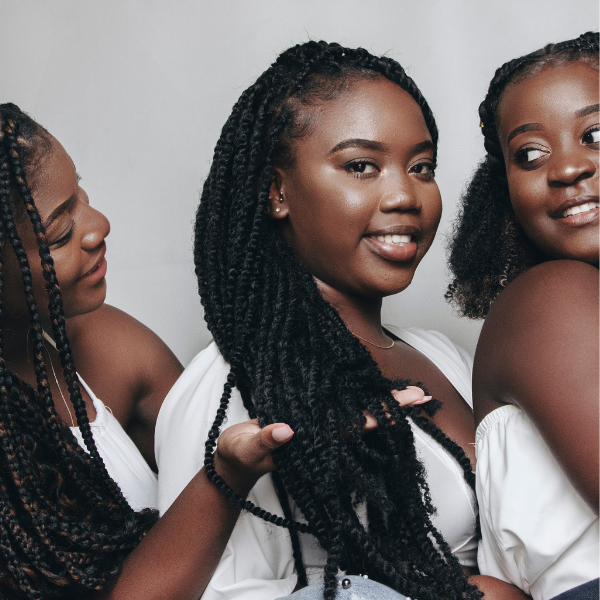Hair Care for Different Hair Textures
Hair care practices can vary widely among individuals of different racial and ethnic backgrounds. It’s important to note that there is a great diversity within each group, and even individuals may have different hair textures and patterns along with length, density, moisture, and elasticity. Hair care routines can also be influenced by cultural, social, and personal preference. Here are some hair care practices for textured and coily hair that different from straight.
Hair Types and Textures:
As you may know, there are different hair types and textures, which is also referred to as curl pattern. Curl patterns range anywhere from 1A which tends to be straighter and thinner, to 4C which is denser and coily. Hair patterns and textures are crucial characteristics to consider when talking about the difference in hair care and the frequency in which it is washed.
Moisture:
Moisture is another important aspect that determines an individual’s hair care routine. Moisture refers to the oil that is produced from the sebaceous glands and released from the hair follicle. Oil takes longer to penetrate denser and more textured hair, particularly those with tighter curls or coils. Consequently, many individuals with textured hair prioritize moisture and choose to wash hair less frequently, and instead use hydrating shampoos and conditioners to maintain moisture levels and prevent dryness. On the other hand, people with thin straight hair may choose to wash their hair more often because their hair gets too oily.
Co-Washing:
Conditioner washing, mostly known as Co-washing, is a practice in which individuals skip shampooing and instead use conditioner to cleanse their hair. This helps retain natural oils that are often stripped away with traditional shampoo and helps prevent excessive drying. Hair with more texture and density tends to be more prone to dryness, breakage, and frizz due to its unique structure. Thus, co-washing is a pivotal step in a textured hair care routine.
Natural Oils and Butters:
Natural oils can play a significant role in maintaining the health and vitality of textured hair. Many people with textured hair use natural oils like coconut oil, jojoba oil, and Shea butter to seal in moisture, add shine, and promote hair health. These oils are often sourced from plants that are native to Africa, the Caribbean, and other regions. Using natural oils has been a vital practice for maintaining healthy hair and skin in many cultures and for many generations.
Protective Styling and Low manipulation:
Protective styling is a haircare practice that promotes healthy hair growth and minimizes damage. These styles are designed to reduce manipulation, friction, and exposure to environmental factors that can lead to damaged hair. Protective hair styles involve tucking the ends of the hair away and minimizing the need for constant styling and manipulation, thus allowing the hair to grow and retain its length. Many people opt for styles that can be worn for several days without needing constant restyling. Some examples are braids, twists, cornrows, and buns. Protective styling is yet another way to nurture textured hair.
As we just discussed, cultural practices and traditions can play a significant role in hair care. Some individuals may choose to wear their hair in styles that are reflective of their cultural identity or personal preferences. Learning about your hair type, seeking advice from professionals, and experimenting with different products and techniques can contribute to a personalized hair care routine that’s best for you!

